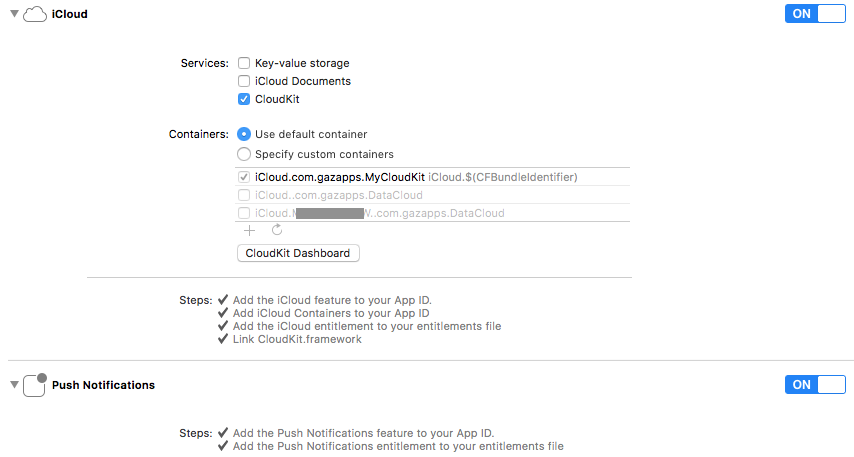I've just create a project in Xcode 9 beta 6 and add this code:
let privateDB = CKContainer.default().privateCloudDatabase
let greatID = CKRecordID(recordName: "GreatPlace")
let place = CKRecord(recordType: "Place", recordID: greatID)
privateDB.save(place) { (record, error) in
if error != nil {
let er = (error as! CKError).errorUserInfo
print("Error: \n")
print("CKErrorDescription: \(er["CKErrorDescription"]!)\n")
print("ContainerID: \(er["ContainerID"]!)\n")
print("NSDebugDescription: \(er["NSDebugDescription"]!)\n")
print("NSUnderlyingError: \(er["NSUnderlyingError"]!)\n")
print("NSLocalizedDescription: \(er["NSLocalizedDescription"]!)\n")
print("ServerErrorDescription: \(er["ServerErrorDescription"]!)\n")
}
if record != nil {
print("record: \(record!)")
}
}
and add this capabilities:
and when I run the code I receive this error message:
What I am doing wrong ?


